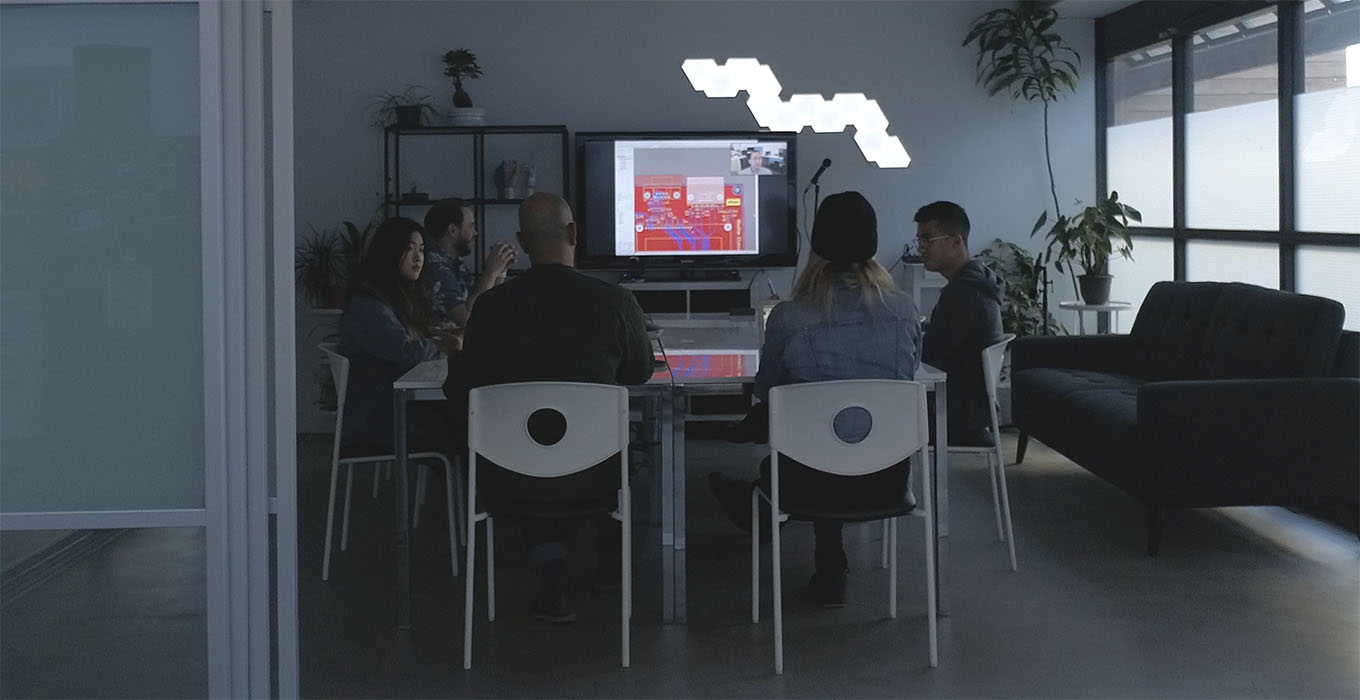
BLOG
Adaptive Organizations: Part II
WRITTEN BY REBECCA APOSTOLI, FORMER CHIEF PEOPLE OFFICER AT MISTYWEST
In Part One of this blog series we talked a bit about the foundations of Holacracy as an organizational structure and how we deal with and utilize tensions as a thermometer of sorts. Innovative environments are steeped in conflict, and the successful ones learn how to leverage conflict to drive teams to deeper understandings of both the people they work with and the technical challenges they face together.
If tensions are the conflict-sensing thermometer in Adaptive Holacracy then meetings are the medicine, and OKR’s and GTD are the preventative check-ups.
Tactical Meetings
One of the requirements of holding a role in a Circle is to attend the tactical meeting of that Circle. A tactical meeting is a highly-structured, quick and efficient format for coming together as a group, checking in, reporting on metrics and surfacing the most urgent tensions concerning the Circle’s operations, and are held a minimum of 1 x per week for each circle.
The meetings are called by the Secretary, who also records Circle metrics and any meeting discussions. We use Asana to track each tactical meeting and any resulting tensions.
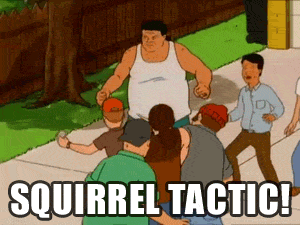
The purpose of a tactical is to surface and triage tensions in the Circle – not to work towards resolution. Once a tension is identified, it is assigned to the Role best equipped to resolve it, which they do outside the tactical meeting; this keeps one tension or issue from potentially monopolizing all of the time (a common issue, for any organization, in non-tactical meetings).
Governance Meetings
Governance–or as we affectionately call it, Givernance–meetings, unlike tacticals, offer a venue to reach decisions on critical operational proposals and requests (usually concerning the definition and distribution of Roles and their accountabilities). They operate on a different format, in that:
1. A Role may log a tension and a proposal to address that tension.
2. The meeting participants then may ask any clarifying questions regarding the proposal and log their reactions.
3. The Proposer is then given the opportunity to amend or clarify any parts of the proposal, which is then open for Objections from the circle.
4. Each Objection is validated by the group and, if valid, it is integrated into the proposal one at a time, until all Objections are heard and logged.
5. Once this process is complete, the new Proposal is adopted and the next tension is heard. If no Objections are logged, then the Proposal automatically passes.
Objectives & Key Results (OKR’s)
Distributed authority and individual accountabilities can only be successfully implemented if everyone is on the same page with regards to how to prioritize action. Otherwise, certain teams or individuals might be wasting time, energy or other valuable resources on net-zero action, or even worse; working at cross-purposes without even knowing it!
Objectives and Key Results (OKR’s) are the main mechanism for distributed authority and priority-setting at the circle and individual level within the organization. Every circle has its own OKR’s, and those flow down to each individual Role, which will also have its own KR’s (always working in concert with their circle’s objectives). Every circle’s objectives are set in concert with top level Vision Circle (or organizational) objectives, which in turn provides a uniform guideline for priority-setting cascading all the way through the organization.
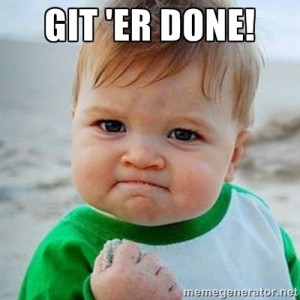
Courtesy of the Internet
Getting Things Done (GTD)
GTD is a task capturing & processing system that facilitates Getting Things Done.
“It’s possible for a person [or team] to have an overwhelming number of things to do and still function productively with a clear head and a positive sense of relaxed control.” — David Allen
Within the GTD system (also known as Gettin’ Er Done around here), trust is the outcome and not a requirement of functional process. It allows for transparency into what your colleagues are currently working on, what their priorities are, as well as trust in yourself that you are on top of your proverbial sh*t. Using GTD, it’s feasible for each role to carry a large number of tasks without becoming burdened by the need to remember each and every one. It’s also relatively easy to provide status updates on various projects regularly or on-demand (as is often the case in radically agile companies).
Asana is the main tool MistyWest uses to capture tasks and quickly prioritize them in our respective workflows. When you have an action, you record it in your Asana “My Tasks” quickly. If you have multiple actions to add, add them all at once.
Every day you “Process your GTD” by working through your tasks in Asana and assigning them to Today, Upcoming or Later. The idea is to quickly prioritize all your tasks so you may tackle them in the most efficient way possible.
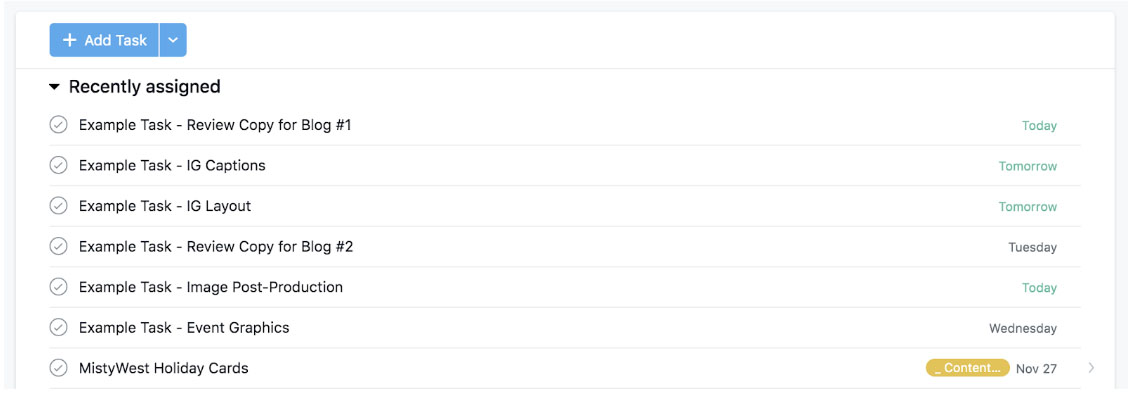
Example of a Westie’s task list
You will also have your Asana inbox to review – this is where any new tensions, questions or requests are raised to you by other roles. The goal is to work through these items, respond and then archive as they are completed or reassigned, eventually reaching Zero Inbox Goals! ? While having a lengthy “My Tasks” section is allowed (even encouraged), a never-ending Inbox is against the spirit of GTD.
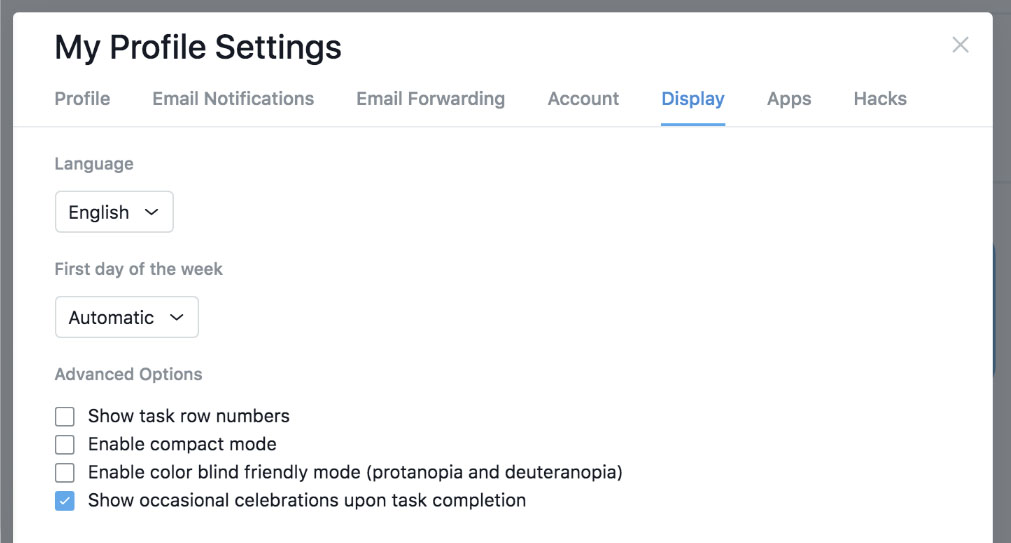
Pro tip: Enable “Occasional Celebrations Upon Task Completion” for colourful surprises when you complete several tasks
Updating Projects & Metrics
GTD also requires that you update any relevant projects in Asana that you are responsible for. You can find status updates under the “Progress” tab at the top of each project. This allows your team to easily and quickly ascertain where you are at with various tasks without having to ask for manual update.
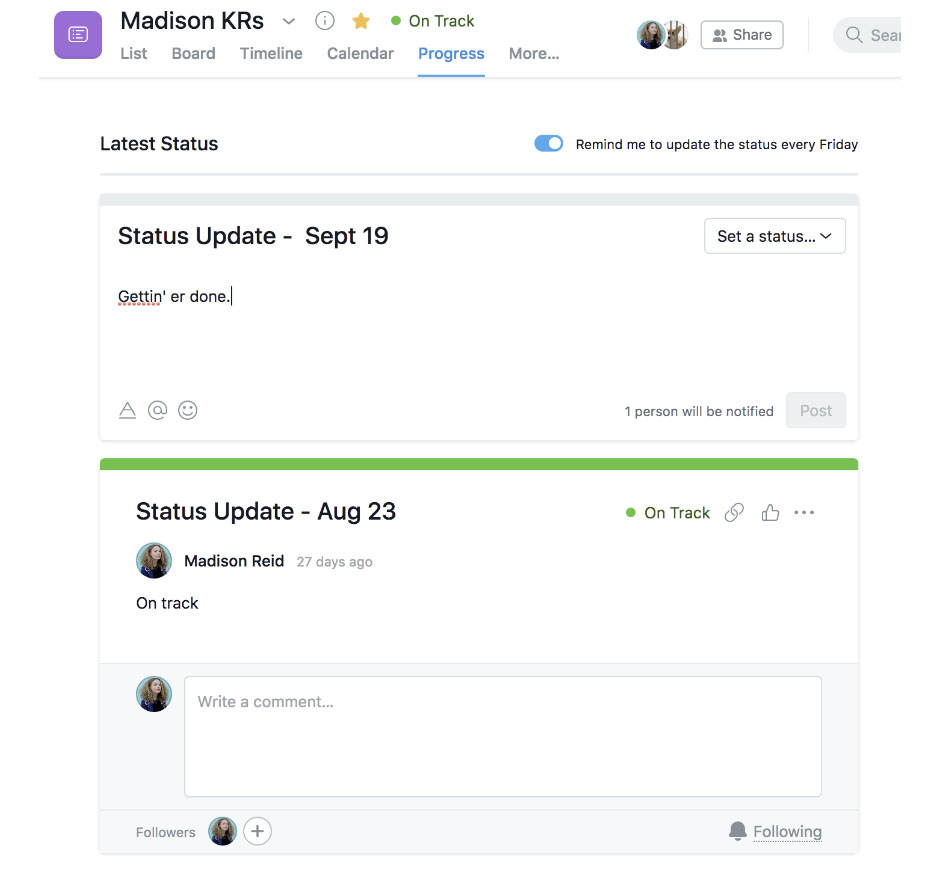
Example of a progress update at MistyWest
As a member of a circle, you may also be assigned certain metrics to report on. These are generally due at each tactical, depending on the cadence of the metric.
Never Stop Learning
The process of implementing Holacracy at MistyWest has been one of non-stop learning for our team (and we’re not done yet). It’s really pushed us–sometimes to a frustrating degree–to examine every part of not just What we do and How we do it, but Why we do it.
Ultimately, the biggest takeaway has been those three questions, which form the basis for creating an autonomous, engaged and productive workforce.
On that note, we leave you with one final thought:
“The most exciting breakthroughs of the twenty-first century will not occur because of technology, but because of an expanding concept of what it means to be human.” John Naisbitt